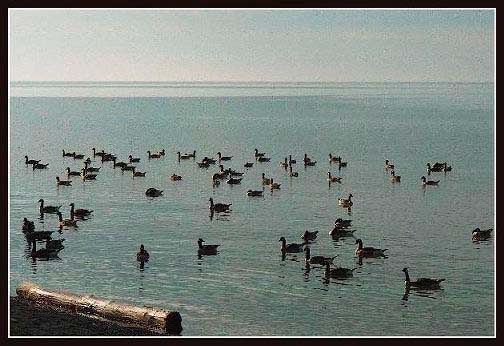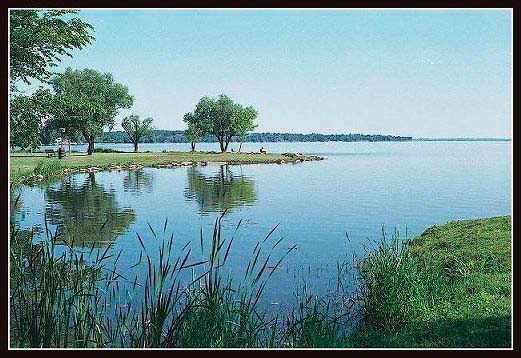Lessons in Composition for the Art Photographer
Version 2.3, Page 5, ©2001 by Dale Cotton, all rights reserved.
Lesson 2: Rhyme, Rhythm, and Repetition
We've already touched upon our next tool; it's hard to separate discussions of rhyme from discussions of unity and fragmentation. That's because we use the three Rs to create unity.

Figure 2a. Canada Geese
In figure 2a we see about as clear-cut an example of shape rhyming as one can have (short of a brick wall, of course!). There are eight, nearly identical, geese. Each also has a mirrored reflection. Plus, as counterpoint, the wave fragments create a separate pattern.

Figure 2b. Canada Geese #2
In 2b the brown colours in the geese rhyme with the beach and log in the lower left and with each other. Yet for me it doesn't work - the geese seem to create a scatter-shot fragmentation rather than unification. Intuitively, I'd say that the reason for this is the missing element of the three Rs: rhythm. The random placement and postures of the geese fail to achieve any discernible pattern.

Figure 2c. Inlet
Exercises for Lessons 1 and 2
Consider 2c your mid-term exam in unity and rhyme. Do you find 2c coherent or are there any elements of fragmentation? Explain why. What rhymes and rhythms can you discern? Use crayons, coloured pencils, or graphics software to sketch a crude abstract to substantiate your claims.
Look back at the Frontispiece. Girl, Detroit 1966. What use of the the three Rs do you find? What shape is most repeated? How would you now address the question about roundnesses and rectangles?
Look at some of your own pictures. Analyse them for unity vs. fragmentation. Find examples of rhyming shapes and/or colours. Find examples of rhythmic repetitions.